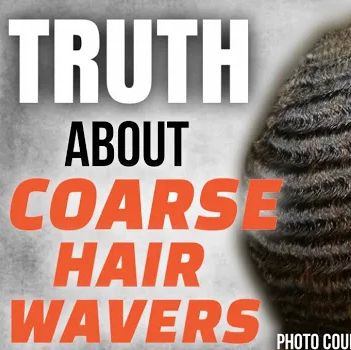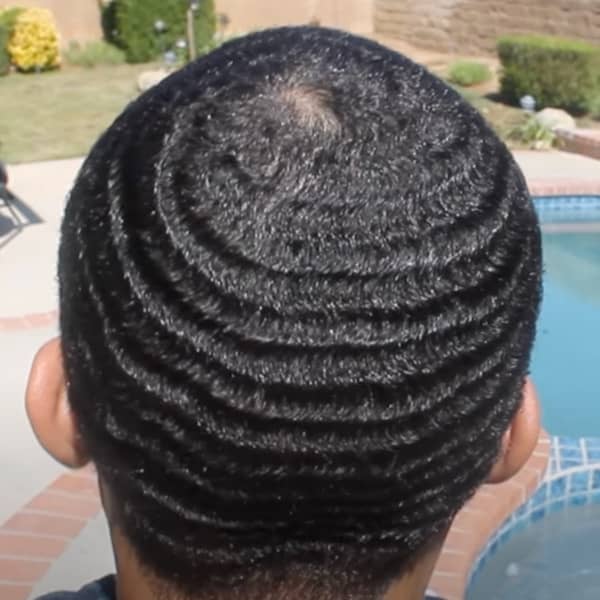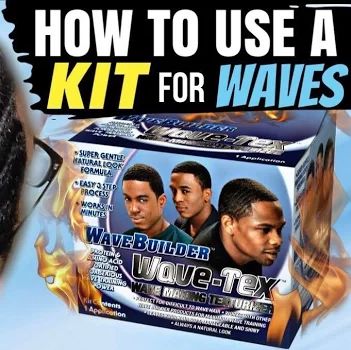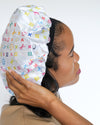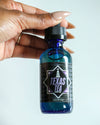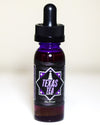Over the years, many men in the black community have simply been told the wrong things about their hair from people who never took the time to learn it, so instead they came up with methods that simply are more damaging than helpful and used terms based on their feelings and not the facts. "Coarse hair" is one of them.
To correct these wrong doings, “coarse hair” is merely a term for thicker and wider strands of hair than the majority of other types. These larger fibers can retain a curl or style effectively when cared for properly, appearing healthy, thick, and robust.
The key, as with any type of hair, is that you know the following:
- How to care for your hair
- What types of products to use
- What should you avoid
This blog was written to provide you with the information necessary to help you better understand coarse hair with hair care methods that are particularly effective at making your coarse hair look and feel amazing JustinTime!
What is coarse hair?
Coarse hair texture has the widest circumference and it contains all three layers of the hair shaft - cortex, cuticle, and medulla. It is often mistaken for "thick hair" or "nappy hair."
So you think you might have coarse hair?
Many Black people assume that they have coarse hair because of their ethnicity; however, coarse hair is a natural texture that many races have. Stylists and dermatologists usually define coarse hair as having a bigger circumference than other types of hair. It does not imply that your hair is rough-textured or difficult to manage as it is left to believe within our community.
When you run a strand of coarse hair between your fingers, you may feel how thick it is. It feels and appears to be broader than a sewing thread. Don't worry if this sounds like you!
Please keep in mind that if your hair was not always naturally coarse, there are some factors that can lead to your hair texture becoming coarser that you should be aware of as outlined below:
- Hair growth medications like Minoxidil
- Prescription drugs, such as steroids
- Hormone imbalances
- Some thyroid conditions
6 Things To Do For Coarse Hair
1) Use Leave-in Conditioners
2) Use a Silk or Satin Durag
3) Sleep on a Silk Pillowcase
Silk is proven to have a smaller coefficient of friction than cotton. This may be the reason why so many beauty experts recommend using a silk pillowcase at night to protect your hair.
Silk pillowcases provide an almost frictionless surface that is gentler on your hair, your face and your beard versus cotton material that can create split ends by it getting snagged at night.
The material is known to absorb less moisture, which aids in helping your hair retain the natural oils that it produces. What this means for you is healthier, shinier and softer hair.
If you decide to buy one, these are the silk pillowcases we recommend. If you decide to buy another brand, be sure to get one that’s 100% pure mulberry silk. Some are advertised as "silk-like," so be on the look out.
Is There A Difference Between Course And Coarse Hair?
The difference between course and coarse hair is not as clear cut as one might think. While some people believe that coarse hair is more common than course hair, others say that course hair is actually more common than coarse hair. However, the truth is that no matter what type of hair you have, it will still need to be washed regularly.
Are Coarse Hair Waver Kits Worth Buying?
If you're looking for a product that will make your hair appear thicker and smoother, then you should consider buying a coarse hair wavier kit. These kits contain everything you'll need to achieve the desired results. They also come with instructions so you won't have any trouble using them.
What To Look For When Choosing A Coarse Hair Waver Kit
There are two main types of coarse hair wavers available today: the 360 wave and the 360 coil. Both types work by creating an artificial wave pattern on the hair shaft. However, there are some differences between these two products.

